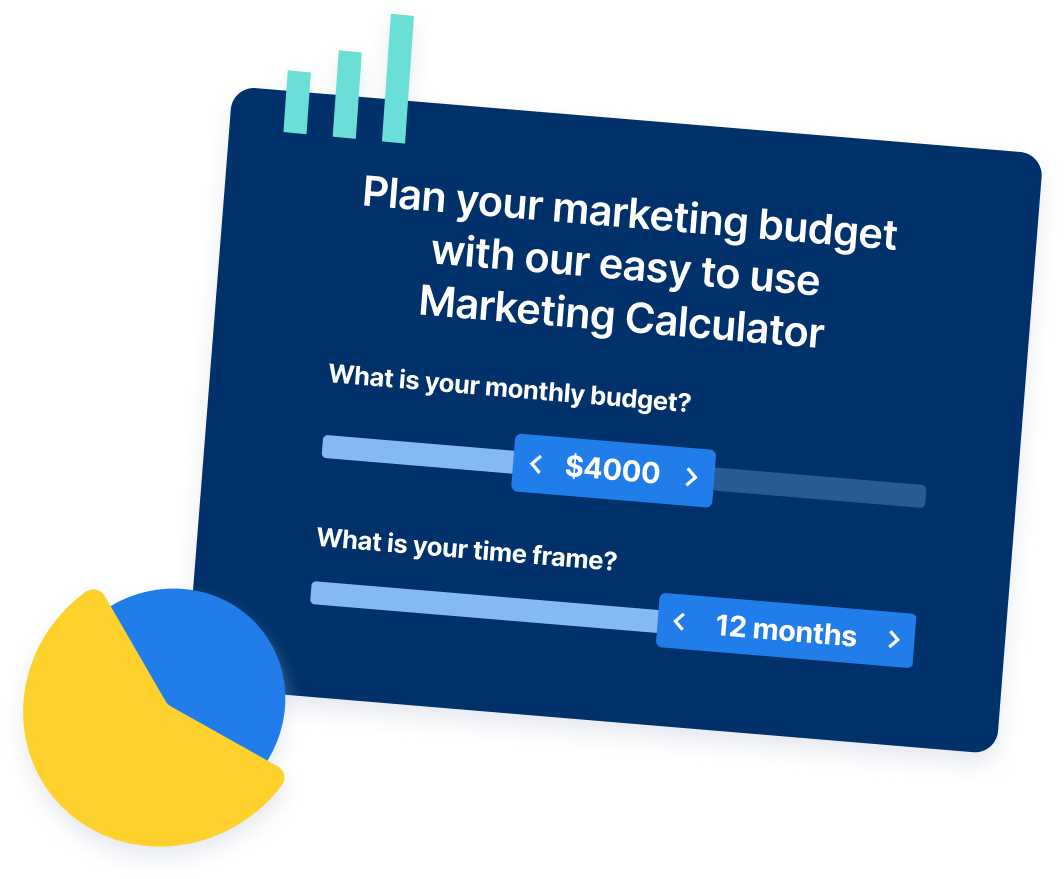- Home
- Blog
- Content Marketing
- How to Write for the Web: 7 Tips to Engage Your Audience
How to Write for the Web: 7 Tips to Engage Your Audience
-
 Published: Aug 2, 2023
Published: Aug 2, 2023
-
 7 min. read
7 min. read
-
Summarize in ChatGPT
-
 Maria Carpena
Maria Carpena Lead Emerging Trends & Research Writer
Lead Emerging Trends & Research Writer
- Maria is a Lead Emerging Trends & Research Writer at WebFX. With nearly two decades of experience in B2B and B2C publishing, marketing, and PR, she has authored hundreds of articles on digital marketing, AI, and SEO to help SMB marketers make informed strategic decisions. Maria has a degree in B.S. Development Communication major in Science Communication, and certifications in inbound marketing, content marketing, Google Analytics, and PR. When she’s not writing, you’ll find her playing with her dogs, running, swimming, or trying to love burpee broad jumps.
Table of Contents
- 7 best practices for writing for the web
- 1. Write with your ideal customer profile (ICP) in mind
- 2. Craft a strong headline
- 3. Use your lead paragraph to invite your visitors to keep reading — or skimming
- 4. Make your content easy to skim
- 5. Support your text with images, videos, or other forms of multimedia
- 6. Be concise
- 7. Make your content search engine-friendly
- What makes web writing different?
- What are the different types of web writing?
- Make web writing a walk in the park
Key takeaways
- Writing for the web is different from writing for print.
- “Know your audience” is the first rule of writing.
- Online readers don’t read web content — they skim pages.
- Write compelling headlines to encourage your target audience to click.
- Divide your piece into subheads, and use short paragraphs so readers can easily digest your messages.
Writing for the web differs from writing a book or a print article. After all, online readers don’t read every word on your web page — they scan it and pick up bits of information relevant to their needs. That’s why this blog post has a key takeaways section on top!
If you’re looking for tips on how to write for the web, you’ll find this page helpful. We’ve dissected it into the following sections:
- How to write for the web: 7 best practices
- What makes web writing different?
- What are the different types of web writing?
Feel free to jump into the topic you wish to learn more about.
7 best practices for writing for the web
Write compelling online content that will drive your audience to engage with your business with these tips:
- Write with your ideal customer profile (ICP) in mind
- Craft a strong headline
- Use your lead paragraph to invite your visitors to keep reading — or skimming
- Make your content easy to skim
- Support your text with images, videos, or other forms of multimedia
- Be concise
- Make your content search engine-friendly
Let’s dive into these online writing tips:
1. Write with your ideal customer profile (ICP) in mind
Consider this the cardinal rule of marketing and writing: Know your audience. When crafting marketing strategies and writing online content, keep your ICP in mind.
Your ICP dictates the content topics you’ll cover and your tone of voice.
2. Craft a strong headline
Make your headline stand out from other page titles your target audience sees online. Write a compelling headline by:
- Using lists and numbers
- indicating what your page is about
- Mentioning the benefits of the content to your reader
To illustrate, here are weak and strong headline examples for a cleaning services’ online content:
| Headline strategy | Weak headline | Strong headline |
| Using lists and numbers | Blog post: Carpet stain removal | Blog post: 5 Tips to Remove Carpet Stains |
| Indicating what a page is about | Service page: Cleaning Services | Service page: Apartment Cleaning Services |
| Mentioning the benefits | Category Page: Our Services | Category Page: Quality and Affordable Cleaning Service |
Pro tip: Write several headline options, and pick the most compelling one. Mind the length of your headlines on search engines’ results pages (SERPs). Use our Google Preview Tool to test your headline!
3. Use your lead paragraph to invite your visitors to keep reading — or skimming
You got your target audience’s attention with your headline. Now it’s your lead paragraph’s turn to encourage your visitor to stay on your page and read (or scan).
That said, make your lead paragraph engaging. If needed, answer your audience’s intent for searching or reading your page above the fold.
You can take a page out of a print journalist’s book by using the inverted pyramid strategy. The inverted pyramid is a news writing style that starts with the most important information and then provides supporting details and less important or exciting information afterward.
The inverted pyramid tactic has been handy for print editors, as they can chop off the latter part of a piece that can no longer fit on the page. Web writers like you can use the inverted pyramid strategy by immediately addressing your target audience’s content needs.
For example, let’s say you’re a travel agency, and your blog post is about what to do in Tokyo. You can start the post with a short intro and then dive into the list of things to do in the city. Supporting details like the weather and how to get around in Tokyo can come next.
4. Make your content easy to skim
Chances are, you reached this section of the blog post by scanning the page. Guide your visitors through your online content by:
- Breaking your topic into subtopics: Use subheads and block quotes to highlight sections and key takeaways.
- Keep your paragraphs short: Aim for two to three sentences in each paragraph, so your readers can easily digest each paragraph or “chunk” of ideas.
- Use a list when you need to mention three or more items: Use lists instead of long paragraphs to make it easy for your readers to scan and remember them.
Pro tip: If you’re writing a blog post, consider writing a blog post outline, which will guide you on how to break your overall topic into subsections.
5. Support your text with images, videos, or other forms of multimedia
Visuals not only attract site visitors, but they also help your readers absorb your messages. You can use different forms of multimedia to support your written content:
- Photos
- Infographics
- Videos
Pro tip: Make sure the multimedia you add to your content is relevant and serves a purpose.
6. Be concise
Keep your sentences short and sweet. Remember, your readers have a finite attention span.
Remove the fluff, and refrain from writing a long introduction before getting to the “meat” of your content. Keep them engaged with your content by using concise sentences.
Pro tip: Use the active voice when writing. Active voice is concise and easier to understand.
7. Make your content search engine-friendly
When you’re writing for the web, you’re writing primarily for your readers, who are your ideal customers. Think of search engines as your secondary audience, as they crawl your site and suggest your pages to online users looking for your content.
Search engine optimization (SEO) is a multipronged strategy to help your web pages rank in search results. You can employ these SEO online writing tips so you can reach prospects who are searching for topics relevant to your business:
- Add your primary keywords to your headline: Tell your audience and search engines what your page is about by putting your primary keywords in your title.
- Link to relevant content: Providing internal (and even external) links helps your readers visit other pages that may help them understand the topic. In addition, internal linking spreads link juice, which spreads ranking power among pages within a website.
Writing for the web: frequently asked questions
Now that you know the best practices for writing for the web, let’s answer some of the burning questions you may have:
Let’s dive in:
What makes web writing different?
Web writing is crafting content that’s meant to be scanned. Meanwhile, writing for print is creating a piece meant to be read, and writing scripts for videos is composing content meant to be heard.
When writing for the web, it’s important to have a compelling headline encouraging your target audience to click. Make your content easy to scan by following the best practices listed above.
What are the different types of web writing?
You can write and publish different types of content online, including:
- Blog posts
- Product or service pages
- Category pages
- Ebooks
- White papers
- Case studies
- Brochures
- Videos
- Social media posts
- Newsletters
We’re masters of our craft.


300+

9,000+

4,000+

200+

100+
Make web writing a walk in the park
They say easy reading is hard writing, and easy writing is hard reading. Because writing for the web is writing content that’s easy to scan and read, it requires some degree of hard writing.
If you need help with web writing, consider teaming up with WebFX. We’re a full-service digital marketing agency with over 29 years of experience, having written 4,000+ blog posts for our clients.
Our team of 750+ digital marketing experts is excited to learn more about your business, industry, and competition, so they can help you crush your revenue goals with web writing and digital marketing.
Contact us online or call us at 888-601-5359 to speak to a strategist about our website copywriting services!
-
 Maria is a Lead Emerging Trends & Research Writer at WebFX. With nearly two decades of experience in B2B and B2C publishing, marketing, and PR, she has authored hundreds of articles on digital marketing, AI, and SEO to help SMB marketers make informed strategic decisions. Maria has a degree in B.S. Development Communication major in Science Communication, and certifications in inbound marketing, content marketing, Google Analytics, and PR. When she’s not writing, you’ll find her playing with her dogs, running, swimming, or trying to love burpee broad jumps.
Maria is a Lead Emerging Trends & Research Writer at WebFX. With nearly two decades of experience in B2B and B2C publishing, marketing, and PR, she has authored hundreds of articles on digital marketing, AI, and SEO to help SMB marketers make informed strategic decisions. Maria has a degree in B.S. Development Communication major in Science Communication, and certifications in inbound marketing, content marketing, Google Analytics, and PR. When she’s not writing, you’ll find her playing with her dogs, running, swimming, or trying to love burpee broad jumps. -

WebFX is a full-service marketing agency with 1,100+ client reviews and a 4.9-star rating on Clutch! Find out how our expert team and revenue-accelerating tech can drive results for you! Learn more
Try our free Marketing Calculator
Craft a tailored online marketing strategy! Utilize our free Internet marketing calculator for a custom plan based on your location, reach, timeframe, and budget.
Plan Your Marketing Budget
Table of Contents
- 7 best practices for writing for the web
- 1. Write with your ideal customer profile (ICP) in mind
- 2. Craft a strong headline
- 3. Use your lead paragraph to invite your visitors to keep reading — or skimming
- 4. Make your content easy to skim
- 5. Support your text with images, videos, or other forms of multimedia
- 6. Be concise
- 7. Make your content search engine-friendly
- What makes web writing different?
- What are the different types of web writing?
- Make web writing a walk in the park

Looking for More?
Get expert ideas, industry updates, case studies, and more straight to your inbox to help you level up and get ahead.
"*" indicates required fields

Proven Marketing Strategies
Try our free Marketing Calculator
Craft a tailored online marketing strategy! Utilize our free Internet marketing calculator for a custom plan based on your location, reach, timeframe, and budget.
Plan Your Marketing Budget
What to read next




